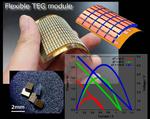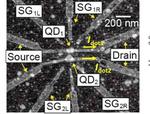Other

“A team of researchers led by Osaka University developed an inexpensive large-scale flexible thermoelectric generator (FlexTEG) module with high mechanical reliability for highly efficient power generation. Through a change in direction of the top electrodes at the two sides of …

“A research team at Osaka University has reported a new advance in the design of materials for use in rechargeable batteries, under high humidity conditions. Using inspiration from living cells that can block smaller particles but let larger particles pass …

“Touch, or tactile sensing, is fundamentally important for a range of real-life applications, from robotics to surgical medicine to sports science. Tactile sensors are modeled on the biological sense of touch and can help researchers to understand human perception and …
“Organic semiconductor materials have the potential to be used in innovative applications such as transparent and flexible devices, and their low cost makes their potential use particularly attractive. The properties of organic semiconductor materials can be tuned by controlling their …

“Quantum dots are nanometer-sized boxes that have attracted huge scientific interest for use in nanotechnology because their properties obey quantum mechanics and are requisites to develop advanced electronic and photonic devices. Quantum dots that self-assemble during their formation are particularly …

“Osaka University-led researchers developed technology to combine “a transparent paper” with high transparency (90% of visible-light transmittance of paper made from cellulose nanofibers) and a conventional “white paper” made from cellulose pulp fibers, fabricating a highly transparent electrode and a …

“Printed replacement human body parts might seem like science fiction, but this technology is rapidly becoming a reality with the potential to greatly contribute to regenerative medicine. Before any real applications, “bioprinting” still faces many technical challenges. Processing the bio-ink …
